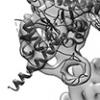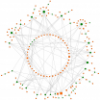Krishna Chinthalapudi's research into molecular motors requires the processing of large amounts of data. He and his team turn to the Ohio Supercomputer Center to turn days of computation into minutes.
Press Releases
Primary tabs
The Ohio Supercomputer Center (OSC) and the Ohio Technology Consortium (OH-TECH) are saddened to learn of the passing of Charles Csuri, the "father of computer art." Chuck, as he was known, was a true pioneer with a remarkable talent for interdisciplinary work and a significant contributor to the creation and success of OSC and all that followed.
For more than 20 years, the Ohio Supercomputer Center (OSC) has been sponsoring the Young Women’s Summer Institute (YWSI) to engage Ohio’s middle school students in STEM education topics. Although the Center had planned to offer the week-long event in person in 2021, the ongoing COVID-19 pandemic prompted a pivot to an online format.
The Ohio Supercomputer Center (OSC) recently upgraded two services to allow clients to store more data at a faster rate and strengthen data backup.
TotalSim US, a computational fluid dynamics (CFD) consulting and solutions firm based in Dublin, Ohio, is helping the state of California certify fuel efficient and environmentally friendly tractor-trailers using resources provided by the Ohio Supercomputer Center (OSC).
Although many college students have access to a personal computer for their studies, it can be challenging for them to learn about how modern, complex computing systems are used in the science, engineering and technology fields without working with the systems directly.
Xia Ning has a large portfolio of research projects at The Ohio State University that focus on understanding how artificial intelligence can be used to solve issues in health care.
With a focus on plant and pollinator species, Colin Campbell, associate professor of physics at the University of Mount Union, studies how these groups interact with one another. Some interactions are mutualistic, where both species benefit, but other interactions are only beneficial for one species. The net effect of many interactions can result in stable or unstable communities, which can be modeled as networks.
Scientists know that plants emit chemicals into the soil to communicate information to other plants. These chemical messages, sent through fungal networks, may warn plants to defend against threats in their environment or to stop encroaching on another plant’s space.









